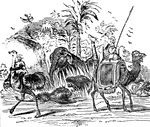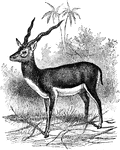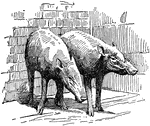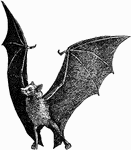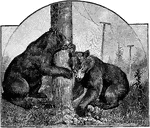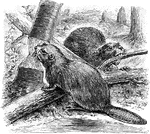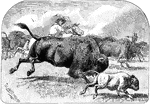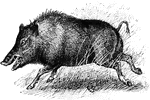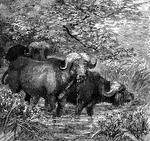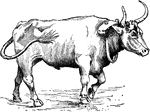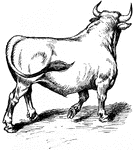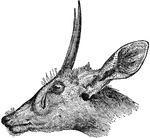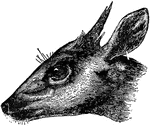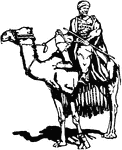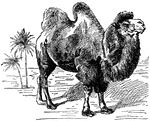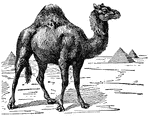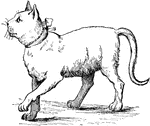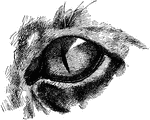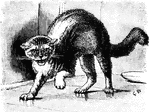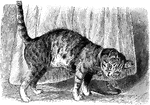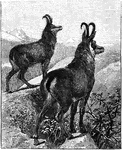
Anoplotherium Commune
"The Anoplotherium commune was of the height of the wild boar, but its form was more elongated;…
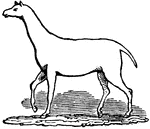
Anoplotherium Gracile
"The Anoplotherium gracile was of elegant proportions, resembling in size and form the gazelle,…
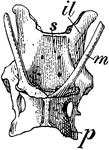
Pelvis of Spiny Anteater
An illustration of the pelvis of a spiny anteater. "m, marsupial bones; il, ilium; p, pubis; s, sacrum."…

Anteaters
Anteaters are the four mammal species of the suborder Vermilingua commonly known for eating ants and…
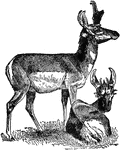
Prong-horn Antelope
"The Prong-horn Antelope inhabits the W. parts of North America, from 53 degrees N. to the plains of…
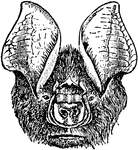
Bat Head
"Bat, one of the group of wing-handed, flying mammals, having the fore-limb peculiarly modified so as…
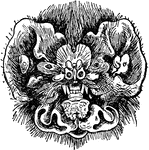
Chin Leafed Bat Head
The head of the chin leafed bat. "Bat, one of the group of wing-handed, flying mammals, having the fore-limb…
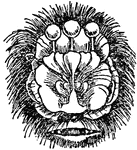
Flower-Nosed Bat Head
The head of the flower-nosed bat. "Bat, one of the group of wing-handed, flying mammals, having the…
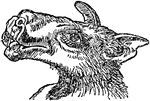
Hammer-Headed Bat Head
The head of the Hammer-Headed Bat (Hypsignathus monstrosus). Also known as the big-lipped bat, it is…

Brown Long-Eared Bat
The Brown Long-Eared Bat (Plecotus auritus) is a mammal in the Vespertilionidae family of evening bats.

Long-Eared Bat
"Bat is the common name of all animals of the class mammalia which are furnished with true wings, and…
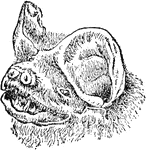
Head of Mastiff Bat
They are generally quite robust, and consist of many strong flying forms with relatively long and narrow…

Pug-Nosed Bat
The pug-nosed bat. "Bat, one of the group of wing-handed, flying mammals, having the fore-limb peculiarly…

Spectral Bat
The Spectral Bat or False Vampire Bat (Vampyrum spectrum) is a mammal in the Phyllostomidae family of…
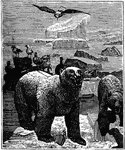
Polar Bears on Iceberg
An illustration of two polar bears standing on icebergs with large icebergs surrounding them.
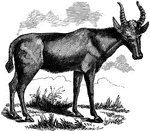
Bubula
"Is of a reddish-fawn color, with black horns, shaped like the tines of a fork. "— S. G. Goodrich,…

Bactrian Camel
The Bactrian Camel (Camelus bactrianus) is a large even-toed ungulate native to the steppes of north…
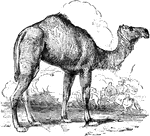
Dromedary Camel
The one-humped or dromedary camel is an ungulate distinguished by the hump on the animal's back.
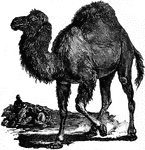
Dromedary
The Dromedary camel (Camelus dromedarius) is a large even-toed ungulate. It is often referred to as…
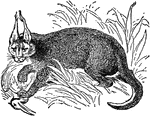
Caracal with Prey
"Caracal, a species of lynx; a native of Northern Africa and Southwestern Asia. It is about the size…
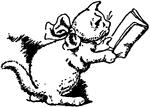
Cat Wearing Bow and Reading Book
An illustration of a cat wearing a bow around its neck and reading a book.
